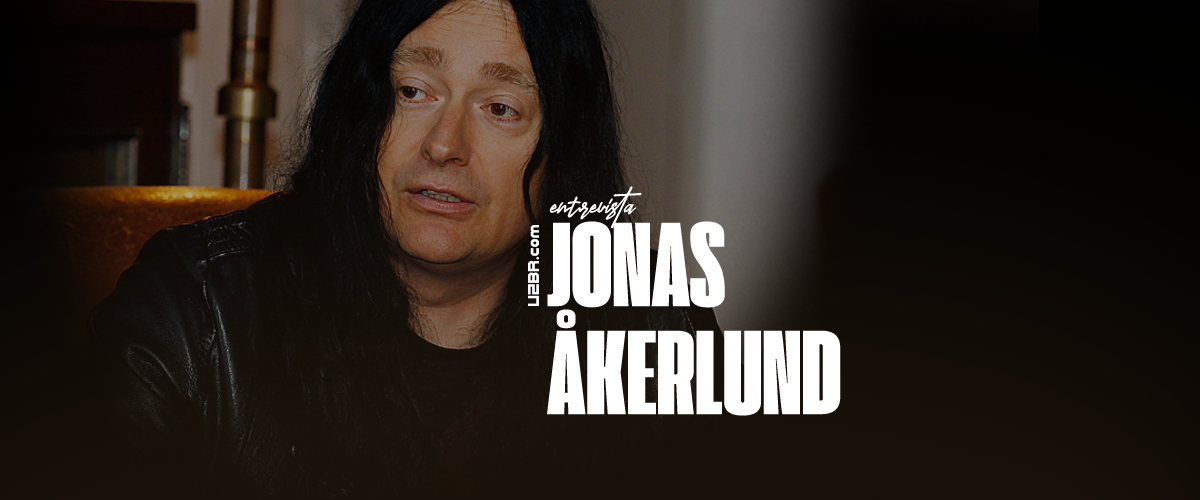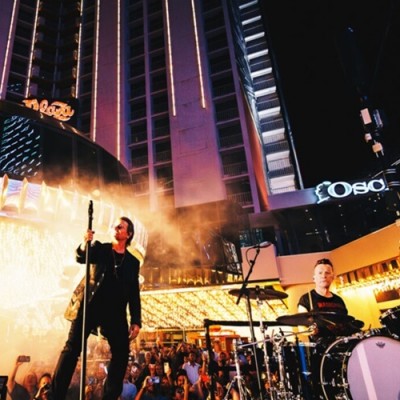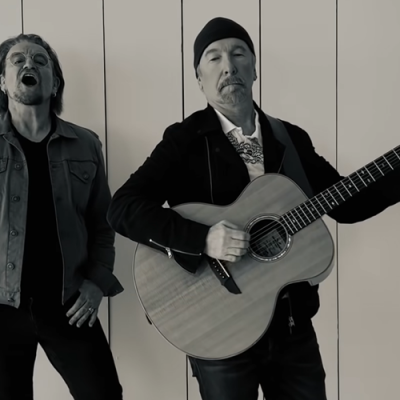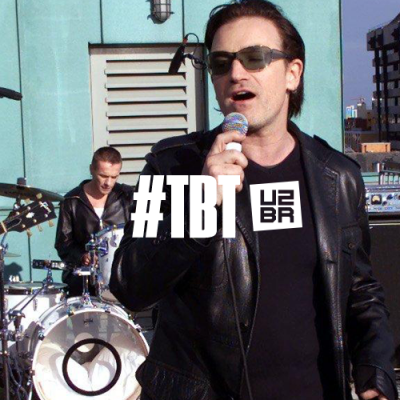Uma música pode ser considerada um pequeno conto, podemos ter a história de uma vida, um amor não compreendido ou correspondido, lembranças da sua família, da sua terra, tantas palavras transpostas que podem ter um milhão de significados para cada ouvinte e em cada momento da vida de quem as escuta, e como passar tudo isso para a tela em tão poucos minutos? Cabe ao diretor ter o olhar certo para fazer isso, um verdadeiro tradutor, uma ponte entre o que a banda e os músicos querem dizer e o seu público.
O U2, ao longo da sua carreira, sempre se cercou de grandes nomes e produziu consequentemente grandes obras para ilustrar as suas canções. O diretor de cinema alemão Wim Wenders é um dos seus maiores exemplos, mas também temos alguns colaboradores recorrentes que ajudaram a definir o estilo da banda e a sua identidade visual.
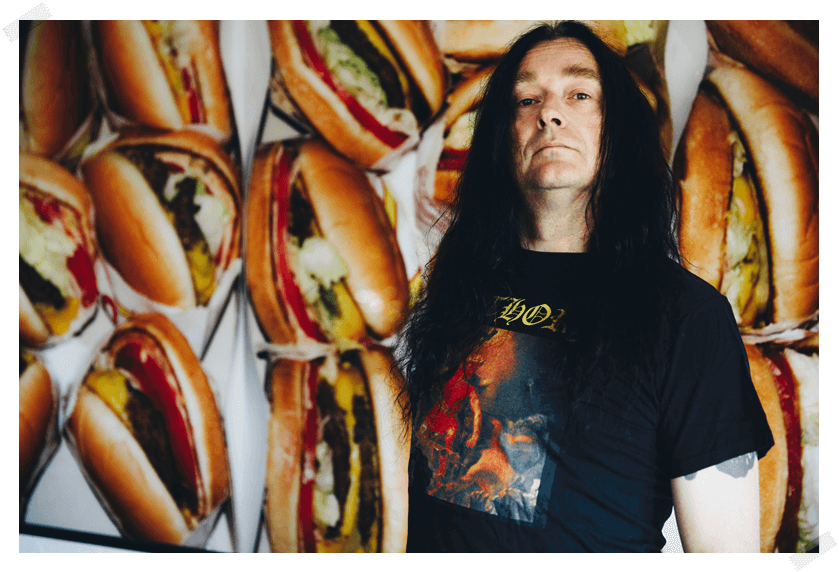
Jonas Åkerlund é um deles. O sueco nascido em 1965 começou o seu envolvimento com música fazendo parte da banda de black metal Bathory, formada no seu país de origem, porém, logo no final da mesma década ele abraçou a direção de videoclipes. Sua parceria mais longa, duradoura e vencedora é com Madonna, tendo se iniciado em 1998 com "Ray Of Light", que sem qualquer falsa modéstia, ajudou a redesenhar a linguagem visual de clipes desde aquele período, o que acabou levando a ser premiado em diversas categorias do VMA, sendo o grande vencedor do clipe musical do ano no Grammy de 1999.
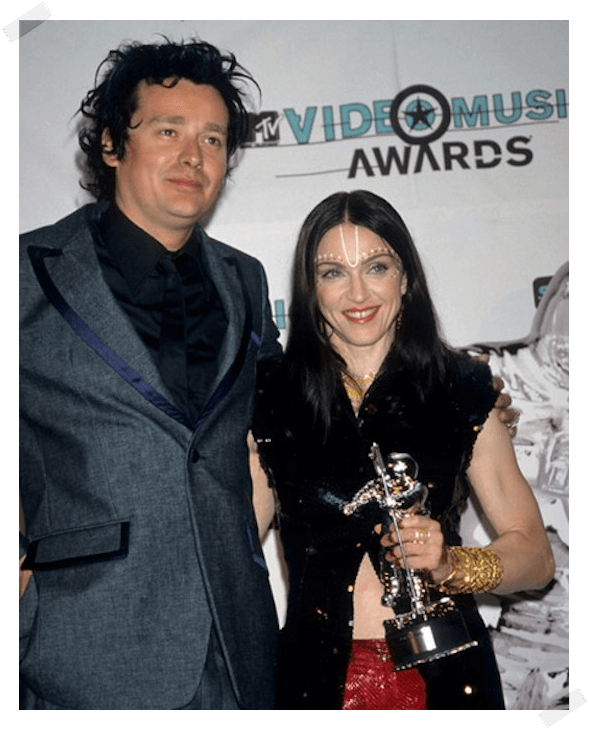
Na sua lista de obras temos dentre outros "Whiskey In The Jair" do Metallica; "Sexed Up" de Robbie Williams; "Paparazzi" de Lady Gaga; "Magic" do Coldplay; e "New Romantics" para Taylor Swift. Todos os seus trabalhos fizeram com que fosse reconhecido com o prêmio Icon (Ícone) da MTV, vencedor de três prêmios Grammy, incluindo pelo seu trabalho ao vivo "Live Kisses" de Paul McCartney. A sua contribuição com Beyoncé pelo álbum "Lemonade" recebeu indicações não apenas ao Grammy, mas também ao Emmy.
A carreira cinematográfica de Jonas também pode se considerada um sucesso com três longas metragens muito elogiados. "Spun", seu filme de estreia, chamou muita atenção após a morte da atriz Brittany Murphy. O seu último trabalho "Lord Of The Caos", lançado no ano passado, aproxima Jonas do mundo musical novamente, uma biografia da banda de black metal Mayhem. Åkerlund também é um documentarista tendo realizado alguns curta metragens com abordagens sobre o racismo e drogas. Seus documentários "I Am Going To Tell You A Secret" e "The Confessions Tour", realizados em parceria com Madonna, também foram premiados. Além disso, já produziu campanhas publicitárias e comerciais para marcas como Dior, Sony, Avon, Dell, Volkswagen, Coca Cola, Smirnoff e Adidas.
Com o U2, talvez a marca mais relevante da parceria seja a busca de mostrar a banda se relacionando com espaços diferentes. "Beautiful Day" no aeroporto de Paris. "Walk On" no Rio de Janeiro. "You Are The Best Thing About Me" em Nova York. E você quer saber o porquê dessas escolhas? Em mais uma entrevista especial realizada por nós, conversamos com o diretor e você confere a seguir.
Como e quando você começou a fazer videoclipes? Como foram seus primeiros trabalhos?
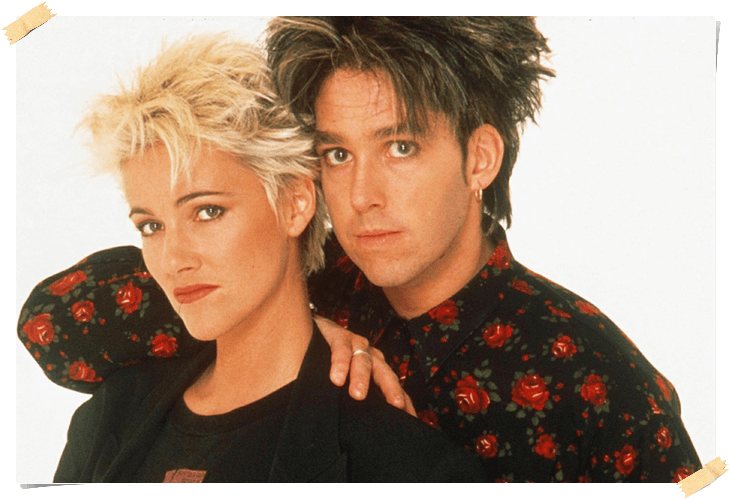
1988 na Suécia. Eu estava tocando bateria, mas descobri a edição de filmes no serviço militar sueco e isso tomou conta da minha vida. Eu tinha muitos amigos no mundo da música e comecei a gravar vídeos de música sueca. Meu primeiro foi com uma banda de metal sueca, Candlemass, e eu trabalhei com várias bandas locais suecas. Em 1990, eu conheci Marie e Per no Roxette e trabalhei com eles em muitos de seus clipes internacionais e isso me trouxe para fora da Suécia.
Como aconteceu a aproximação com o U2, e como é trabalhar com eles?
Eu não tenho certeza exatamente como isso aconteceu, mas eles me pediram para vir a Dublin e conhecê-los e nos encontramos no estúdio e eles tocaram para mim a incrível música de “Beautiful Day”. Eles ainda não haviam gravado os vocais, então Bono estava cantando ao vivo para mim. Foi incrível e memorável.
Eles são muito exigentes? Eles se envolvem muito no trabalho?
Eles são, mas eles colaboram e amam fazer ótimos vídeos. Muito poucos artistas fazem. Eles me fizeram melhor do que eu pensava, esperavam o melhor e me mantinham na ponta dos pés. Eu aprendi muito com eles. Quando os conheci, eles tinham feito muito mais vídeos do que eu tinha na época.
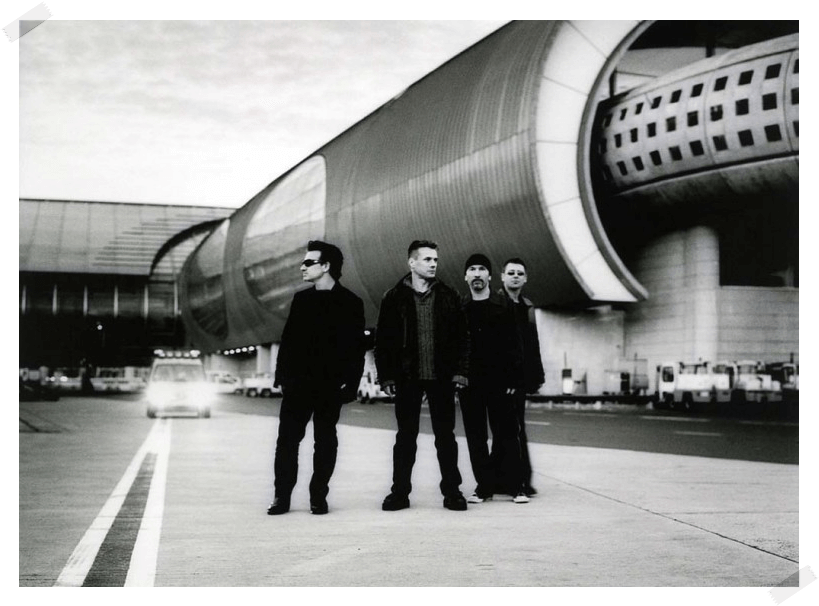
Falando especificamente sobre o seu trabalho com a banda, uma das características é o uso de locações em diversos pontos do planeta. Como é feita essa escolha? Há alguma coisa que você tenta mostrar ou você mostra aquilo que você vê no momento? Como é conciliar a gravação com a rotina dos locais em que são filmados? Como é filmar com uma banda tão conhecida em locais tão movimentados (a Times Square e o aeroporto de Paris, por exemplo)?
O U2 é uma banda internacional e eles se comportam como pessoas normais, eu nunca conheci uma banda que estivesse genuinamente tão interessada em pessoas e gastasse tempo conversando com seus fãs e pessoas na rua. Eu lembro quando estávamos filmando debaixo de uma ponte no Rio para o vídeo “Walk On” e nós tínhamos um intervalo para o almoço, em vez de irmos almoçar, a banda inteira saiu para conversar com seus fãs.
A decisão criativa de filmar em Paris, Rio ou Nova York sempre foi uma decisão entre mim e a banda, sempre tentando encontrar um local e um tom que combinassem com a música.
Durante o clipe de “Beautiful Day” o aeroporto estava efetivamente funcionando. Há cenas nas esteiras de bagagens e nas pistas de pouso/decolagem. Como foi conciliar o trabalho de filmagem com os rígidos procedimentos de segurança do aeroporto?
Isso foi antes do 11 de setembro, então a segurança nos aeroportos era muito diferente, mas foi apenas duas semanas após o Concorde ter caído no Charles de Gaulle, então havia vários alertas vermelhos. Eu me lembro de Bono trocando abraços no aeroporto para intrometer-se nos lugares. Haha, só Bono pode fazer isso.
Como foi a gravação ao lado da pista de pouso de um dos maiores aeroportos do mundo? Em muitas cenas, a banda (especialmente Bono) parecia estar se divertindo. Houve realmente espaço para diversão nesse trabalho?
Nós estávamos bem entre as duas grandes pistas de aterrissagem e os aviões estavam chegando e decolando. Eu só posso imaginar sentado em um avião e olhando pela janela para nos ver tocando enquanto você pousa em Paris. Foi muito barulhento, mas muito divertido.
Como foi filmar o clipe de “Walk On” no Rio de Janeiro? Como surgiu a ideia de gravar o vídeo na cidade? Quais foram as suas impressões sobre o nosso país?
O U2 estava em uma turnê promocional na América do Sul e eu fui vê-los para falar sobre o vídeo. Decidimos filmar algumas cenas no estilo documentário e isso se tornou um clipe. O pano de fundo da cidade e os fãs incríveis faziam parte disso. Eu nunca vou esquecer essa filmagem e como a banda era legal quando estávamos improvisando esses momentos memoráveis.
Tem algum artista com quem você gostaria de dirigir um clipe aqui?
Eu sou um grande fã do Sepultura. Isso seria incrível.
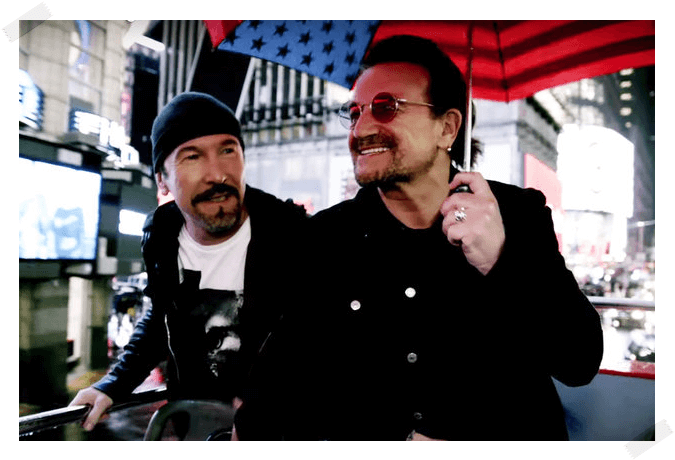
“You’re The Best Thing About Me” é uma canção de amor de Bono para sua esposa, Ali. Há alguma relação da música com Nova York e o que você e a banda queriam transmitir com isso? Na maior parte do vídeo, vemos a banda bem à vontade passeando pela cidade. Era essa a ideia? Dar liberdade para fazerem o próprio roteiro?
Esta filmagem foi uma das mais difíceis que já fiz. Nós tivemos azar com o tempo e trabalhar em Nova York é muito desafiador. A banda foi incrível como sempre. O ônibus turístico foi 100% improvisado. Nós não tivemos nenhum lugar para nos esconder da chuva, então eu peguei o ônibus e parecia incrível tê-los sentados em cima disto. A única coisa que havíamos planejado era o barco para a apresentação da Estátua da Liberdade.
Já faz mais de 1 ano que você dirigiu o clipe de “Get Out Of Your Own Way” na Cidade do México e até o momento ele não foi lançado. Surgiram alguns rumores dizendo que houve problemas com direitos autorais envolvendo o uso dos crânios utilizados nas filmagens do filme de "James Bond: Spectre". Você pode nos dar uma palavra oficial sobre? O vídeo ainda pode ver a luz do dia?
Às vezes as coisas se movem em um caminho misterioso...
Tem alguma cidade no mundo em que você gostaria de filmar com U2? Se sim, você escolheria qual música?
Eu os filmaria em qualquer cidade e a qualquer momento por qualquer uma de suas músicas. Eu os amo como artistas e amigos e sou um grande fã da música deles. Sou abençoado por ter tido a chance de trabalhar com eles. Eu sempre estarei aqui para eles.
A equipe do U2BR gostaria de agradecer a gentileza de Jonas por aceitar nosso convite e conceder um pouco do seu tempo para responder nossas questões. Nosso muito obrigado, Jonas!
ENGLISH VERSION
A song can be considered a short story, we can have the story of a life, an unrealized or corresponded love, memories of your family, of your land, so many transposed words that can have a million meanings for each listener and in each moment of the lives of those who listen to them, and how to pass all this to the screen in so few minutes? It's up to the director to have the right look to do this, a true translator, a bridge between what the band and the musicians want to say and their audience.
U2 throughout the career have always been surrounded themselves with big names and they have produced great works to illustrate their songs. German film director Wim Wenders is one of the greatest examples, but we also have some recurring contributors who have helped shape the band's style and visual identity.
Jonas Åkerlund is one of them. The Swedish that was born in 1965 began his involvement with music being part of the black metal band Bathory, formed in his country of origin, however, towards the end of the same decade he embraced the direction of video clips. His longest-running and winning partnership is with Madonna, starting in 1998 with "Ray Of Light," which without any false modesty helped redesign the visual language of clips from that period, eventually winning a variety of categories at the VMA, being the great winner of Best Music Video at the Grammy in 1999.
In his list of works we have among others "Whiskey In The Jair" by Metallica; "Sexed Up" by Robbie Williams; "Paparazzi" by Lady Gaga; "Magic" by Coldplay; and "New Romantics" for Taylor Swift. All of his works has helped him be recognized with the MTV Icon Award, three Grammy Awards, including for his live work with Paul McCartney's Live Kisses. His contribution to Beyoncé's album "Lemonade" received nominations not only for the Grammy but also for the Emmy.
Jonas's film career can also be considered a hit with three highly praised feature films. "Spun," his debut film, drew a lot of attention after the death of actress Brittany Murphy. His latest work "Lord Of The Caos", released last year, brings Jonas closer to the musical world again, a biography of the black metal band Mayhem. Åkerlund is also a documentary filmmaker who has made some short films with approaches on racism and drugs. His documentaries "I Am Going To Tell You A Secret" and "The Confessions Tour", carried out in partnership with Madonna, were also awarded. In addition, he has produced advertising and commercial campaigns for brands such as Dior, Sony, Avon, Dell, Volkswagen, Coca Cola, Smirnoff and Adidas.
With U2, perhaps the most relevant signature of the partnership is the persuit to show the band relating to different spaces. "Beautiful Day" at Paris airport. "Walk On" in Rio de Janeiro. "You Are The Best Thing About Me" in New York. And you want to know why these choices? In another special interview carried out by U2BR, we talked to the director and you can check it next.
How and when did you start making video clips?
1988 in Sweden. I was playing drums but discovered film editing in the Swedish military service and it took over my life. I had a lot of friends in the music world and started to shoot Swedish music videos. My first one was with a Swedish metal band Candlemass and I worked with a lot of Swedish local bands. 1990 I met Marie and Per in Roxette and I worked with them on many of their international videos and this brought me outside of Sweden.
How did you get involved with U2 and what is like working with them?
I'm not sure exactly how it happened but they asked me to come to Dublin and meet them and we met in the studio and they played me the incredible “Beautiful Day” song. They had not recorded the vocals yet so Bono was singing it live for me. It was incredible and memorable.
Are they very demanding? Do they get too involved in the work?
They are but they understand collaboration and love making great videos. Very few artists do. They made me better than I thought I was, they expect the best and keep me on my toes. I learned a lot from them. When I met them they had done a lot more videos then I had at the time.
Speaking specifically about your work with the band, one of the characteristics is the use of locations in many parts of the planet. How is that choice made? Is there anything you try to show or do you show what you see at the moment? What is like to combine the recording with the places routine where they are filmed? What is like filming with such a well-known band in such busy places (Times Square and Paris airport, for example)?
U2 is an international band and they move around like normal people, I have never met a band that is so genuinely interested in people and spend time talking to their fans and people on the street. I remember when we were shooting under a bridge in Rio for the video “Walk On” and we had a lunch break, instead of going to lunch the whole band walked out talking to their fans.
The creative decision to shoot in Paris, Rio or New York has always been a decision between me and the band, always trying to find a location and tone that matches the music.
During the “Beautiful Day” video the airport was effectively working. The are scenes at the baggage claim area and at runways. How was it to combine the filming work with the rigid airport security procedures?
This was before 9/11 so the security at airports was very different, but it was only two weeks after the Concorde crashed at Charles de Gaulle so there was a lot of red bands. I remember Bono trading hugs at the airport to cut in at places. Haha, only Bono can do that.
How was the recording right next to the landing strip of one of the biggest airports in the world? In many scenes, the band (especially Bono) seemed to be having fun. Was there really room for fun in this work?
We were right between the two big landing strips and planes were coming in and taking off. I can only imagine sitting on a plane and looking out the windows to see us performing as you land in Paris. It was very noisy but a lot of fun.
How was filming the “Walk On” video in Rio de Janeiro? How did the idea of recording the video in the city come up? What were your impressions about our country?
U2 was on a promo tour in South America and I went to see them to talk about the video. We decided to shoot some documentary style footage and this became the video. The backdrop of the city and the incredible fans were part of it. I will never forget this shoot and how cool the band was when we were improvising these memorable moments.
Is there any artist you would like to direct a video here?
I am a big fan of Sepultura. That would be amazing.
“You’re The Best Thing About Me” is a love song from Bono to his wife, Ali. Is there any relation between the song and New York and what did you and the band want to show with it? In the most part of the video, we see the band well at ease touring through the city. Was that the idea? Giving them the freedom to making their own script?
This shoot was one of the hardest I have ever done. We had bad luck with the weather and working in NYC is very challenging. The band was incredible as always. The tour bus was 100% improvised. We didn't have anywhere to hide from the rain so I got the bus and it looked incredible to have them sitting on top of it. The only thing we had planned was the boat to the Statue of Liberty performance.
It has been over a year now that you have directed the “Get Out Of Your Own Way” video in Mexico City and so far it has not been released. Some rumors say that there have been copyright issues involving the use of the skulls used in the filming of “James Bond: Spectre” movie. Can you give us some official word about it? Is still possible for the video to see the daylight?
Sometimes stuff moves in a mysterious way...
Is there any city in the world where you would like to shoot with U2? If so, would you choose which song?
I would shoot them in any city and any time for any of their songs. I love them as artists and friends and I'm a big fan of their music. I'm blessed to have had the chance to work with them. I will always be here for them.
The U2BR staff would like to thank Jonas for his kindness in accepting our invitation and giving a bit of his time to answer our questions. Thank you very much, Jonas!
